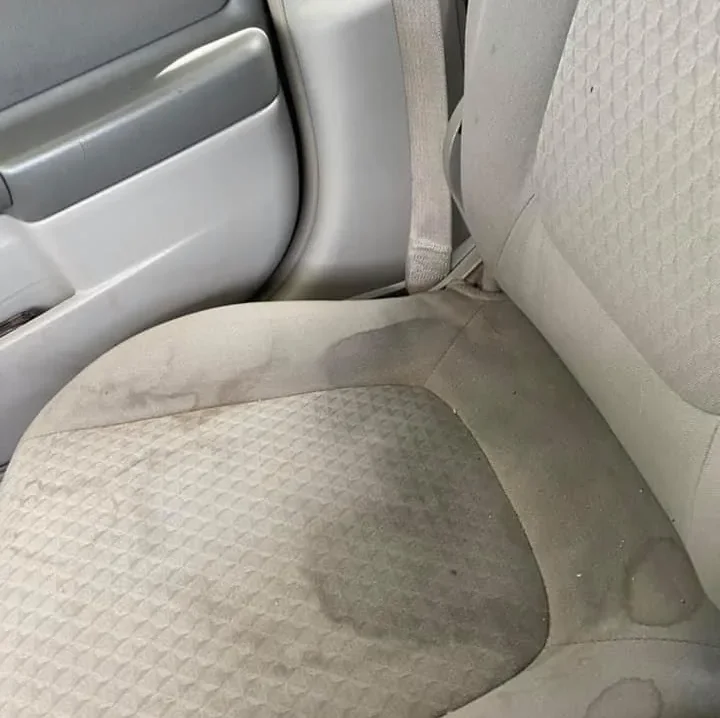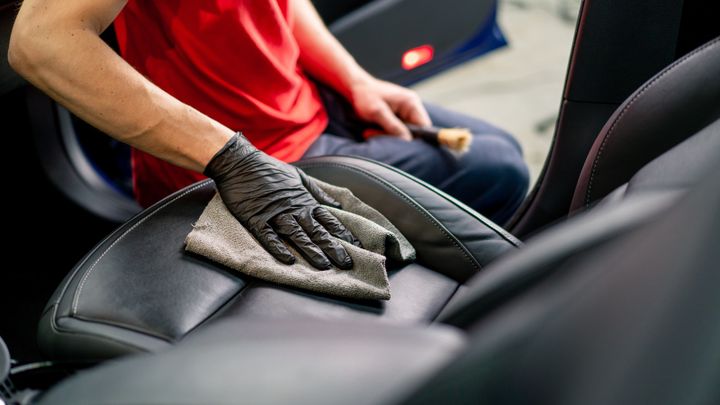


The use of shaving cream as a cleaning agent for car seats has gained popularity on social media platforms like TikTok and Facebook. This unconventional hack promises an easy and affordable way to remove stains and freshen up the interior of your vehicle. However, the effectiveness and potential risks of this method have been subject to debate among experts and car enthusiasts.

I understand the appeal of using shaving cream to clean car seats. It's a readily available household product that creates a thick, foamy lather, which might seem like an effective way to lift dirt and grime from the upholstery. However, this approach is misguided and can lead to several issues that are difficult to rectify.
Using shaving cream to clean car seats, especially fabric or porous upholstery, can lead to several problems:
| Cause | Issue |
|---|---|
| Shaving cream is designed to create a thick, stable foam | The foam can get trapped deep in the upholstery fibers, leaving residue and stains that are hard to remove. |
| Lack of proper cleaning agents | Shaving cream does not contain the necessary agents to effectively lift dirt and grime from car seats. |
Shaving cream is formulated to create a stable foam that clings to the skin during shaving. This same property makes it incredibly challenging to rinse out completely from porous materials like car seat fabric. The foam can get trapped deep within the upholstery fibers, leaving behind a sticky residue that attracts more dirt and grime over time, leading to unsightly stains and discoloration.
Shaving cream is designed for a specific purpose: to lubricate and soften facial hair for a close shave. It does not contain the necessary cleaning agents to effectively lift and remove the various types of dirt, oils, and grime that accumulate on car seats. Without the right cleaning agents, the shaving cream merely spreads the contaminants around, potentially pushing them deeper into the fabric.
If you've already attempted to clean your car seats with shaving cream, it's crucial to inspect the upholstery for signs of damage. Here are the steps I recommend:
Visual Inspection: Closely examine the car seats for any discoloration, staining, or residue left behind after using the shaving cream.
Tactile Inspection: Run your hands over the fabric to feel if any areas are still damp or have a soapy residue.
Odor Check: Check for any lingering odor from the shaving cream, which can be a telltale sign of trapped residue.
Common signs of damage include:
| Sign | Description |
|---|---|
| Stubborn stains or discoloration | Stains or discoloration that won't come out, even after multiple attempts to clean. |
| Damp or sticky areas | Areas on the fabric that are damp or sticky, indicating trapped shaving cream residue. |
| Lingering scent | A strong, lingering scent of shaving cream on the seats. |
If you've identified any issues caused by using shaving cream on your car seats, here are some repair instructions to help mitigate the damage:
Use a wet/dry vacuum or upholstery cleaner to extract as much of the residue as possible.
Mix a solution of warm water and a small amount of mild detergent or upholstery cleaner.
Gently scrub the affected areas with a soft-bristled brush, working the solution into the fabric.
Blot the area with clean, absorbent cloths or towels to soak up the solution and any remaining residue.
Repeat the process as needed until the residue is fully removed.
Use a specialized upholstery cleaner or stain remover designed specifically for car interiors.
Test the product on a small, inconspicuous area first to ensure it doesn't cause further discoloration.
Follow the product instructions carefully, allowing the recommended dwell time and blotting or extracting the solution as directed.
For stubborn stains, you may need to seek professional detailing services.

While repairing the damage caused by using shaving cream on car seats is possible, it's always better to prevent the issue from occurring in the first place. Here are some tips to maintain the condition of your car's interior:
Vacuum car seats regularly to remove surface dirt and debris.
Use specialized car upholstery cleaners or fabric protectors designed specifically for automotive interiors.
Avoid eating or drinking in the car to prevent spills and stains.
Use seat covers or mats to protect the upholstery from wear and tear.
Never use household cleaners or DIY solutions not specifically designed for car interiors.
The cost of repairing or cleaning car seats after using shaving cream can vary depending on the extent of the damage and the method used.
| Repair Method | Cost Range |
|---|---|
| Upholstery cleaners | $10-$30 |
| Professional detailing services | $50-$200 or more |
| Reupholstering or replacing car seats | Several hundred dollars or more |
Minor stains or residue may be removable with upholstery cleaners costing $10-$30. However, for more severe staining or discoloration, professional detailing services may be required, ranging from $50-$200 or more, depending on the vehicle and the level of cleaning needed.
In some cases, if the upholstery is severely damaged or cannot be adequately cleaned, reupholstering or replacing the car seats may be necessary, which can cost several hundred dollars or more.
As a mechanic, I cannot stress enough the importance of using the right products and techniques when cleaning your car's interior. While shaving cream may seem like a convenient and inexpensive solution, the potential consequences can be costly and long-lasting. Always opt for specialized automotive upholstery cleaners and follow proper cleaning methods to maintain the condition of your car's interior.
Remember, prevention is always better than cure. By taking proper care of your car seats and avoiding DIY cleaning methods like using shaving cream, you can save yourself from the hassle and expense of dealing with stubborn stains, discoloration, and potential damage to your vehicle's upholstery.
Avoid using household cleaners like bleach, ammonia-based cleaners, or harsh abrasives as they can damage car upholstery. Stick to specialized automotive interior cleaners.
Yes, shaving cream can also cause issues on leather seats by leaving residue and potentially drying out or discoloring the leather over time.
Car seats should be cleaned regularly, at least once every few months, to prevent buildup of dirt, grime, and stains.
Use a specialized fabric or upholstery cleaner designed for automotive use and follow the product instructions carefully.
While baking soda can help absorb odors, it should not be used as a primary cleaning agent on car upholstery as it may not effectively remove dirt and grime.
Use soft-bristled brushes, microfiber cloths, and a wet/dry vacuum or upholstery cleaner for the best results.
Use seat covers or mats, avoid eating or drinking in the car, and clean up spills immediately to prevent staining.
Steam cleaners can be effective for deep cleaning car upholstery, but use caution and follow the manufacturer's instructions to avoid oversaturating the fabric.
If a stain persists after multiple attempts with upholstery cleaners, consider seeking professional detailing services for more advanced stain removal techniques.
Professional detailing services for cleaning car seats can range from $50 to $200 or more, depending on the extent of cleaning required and the vehicle.

Sarah isn't your average gearhead. With a double major in Mechanical Engineering and Automotive Technology, she dived straight into the world of car repair. After 15 years of turning wrenches at dealerships and independent shops, Sarah joined MICDOT to share her expertise and passion for making cars run like new. Her in-depth knowledge and knack for explaining complex issues in simple terms make her a valuable asset to our team.





